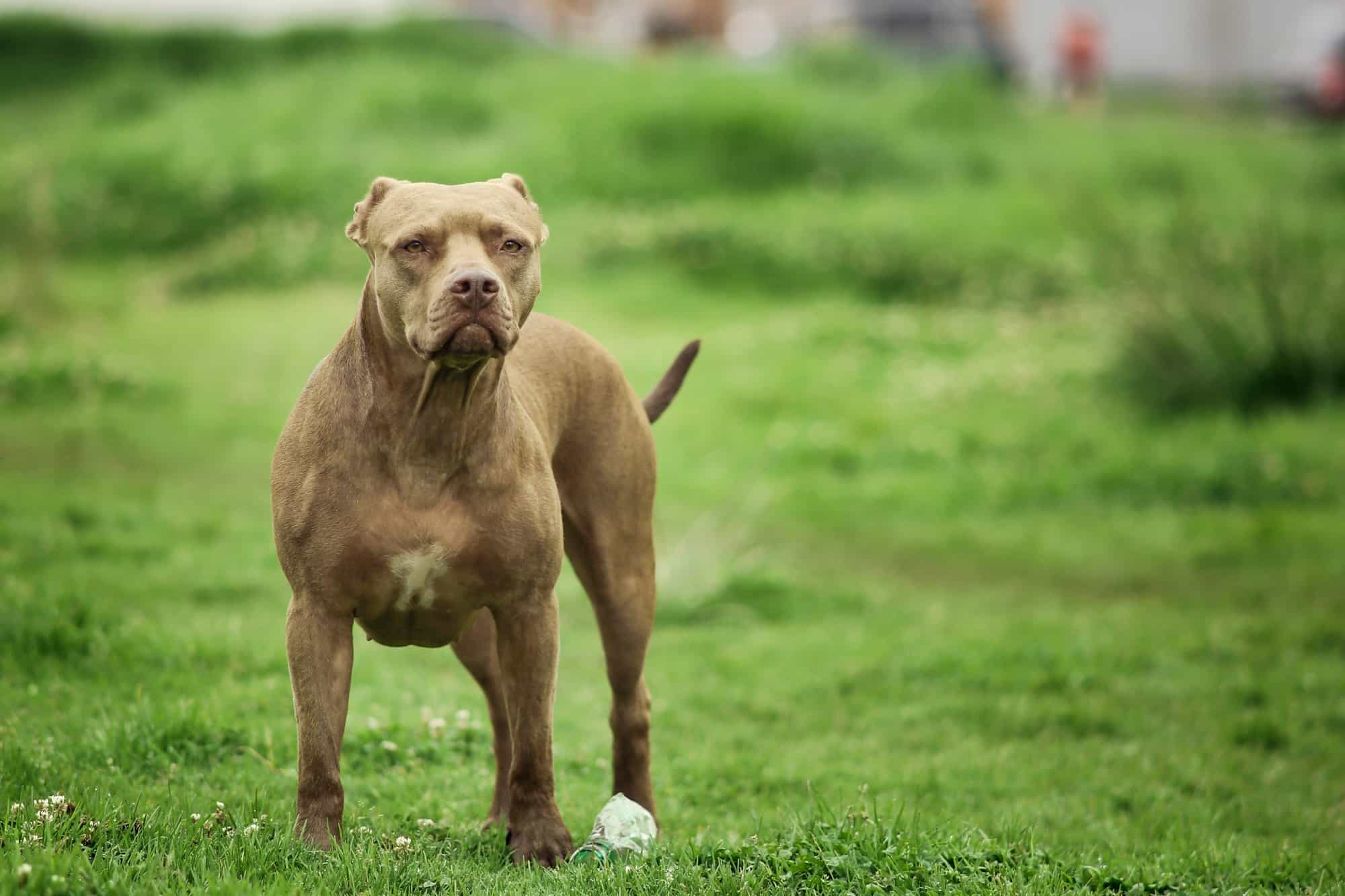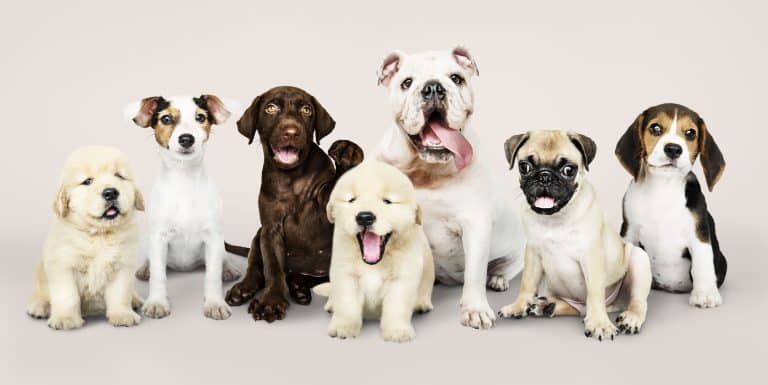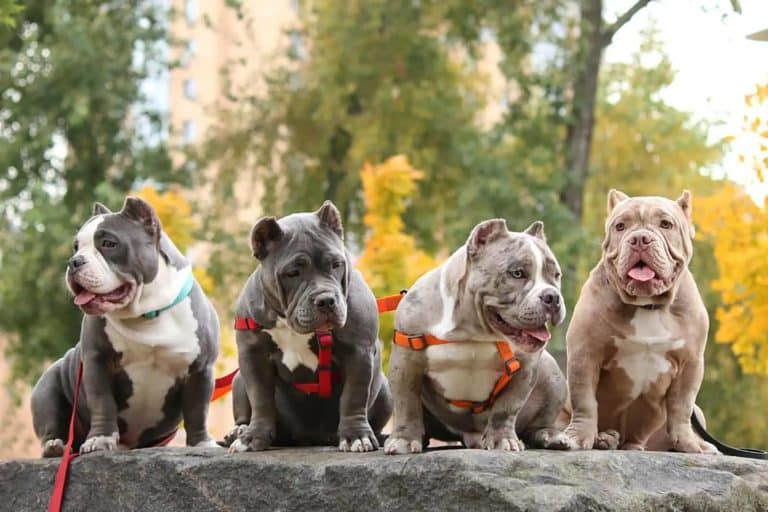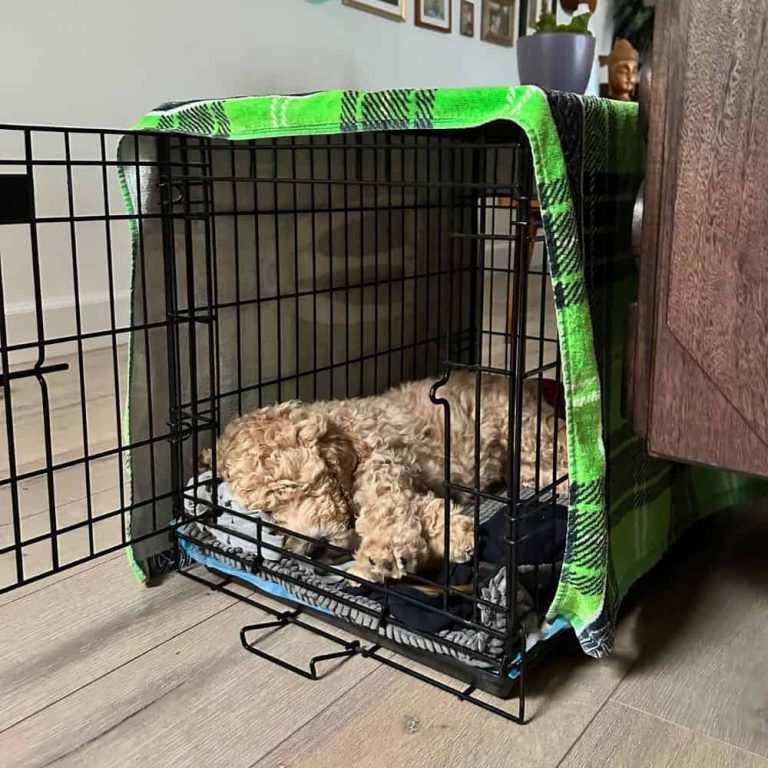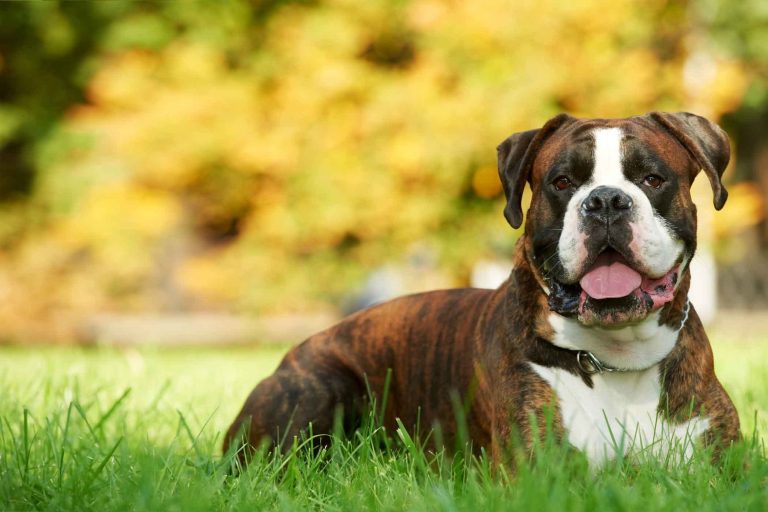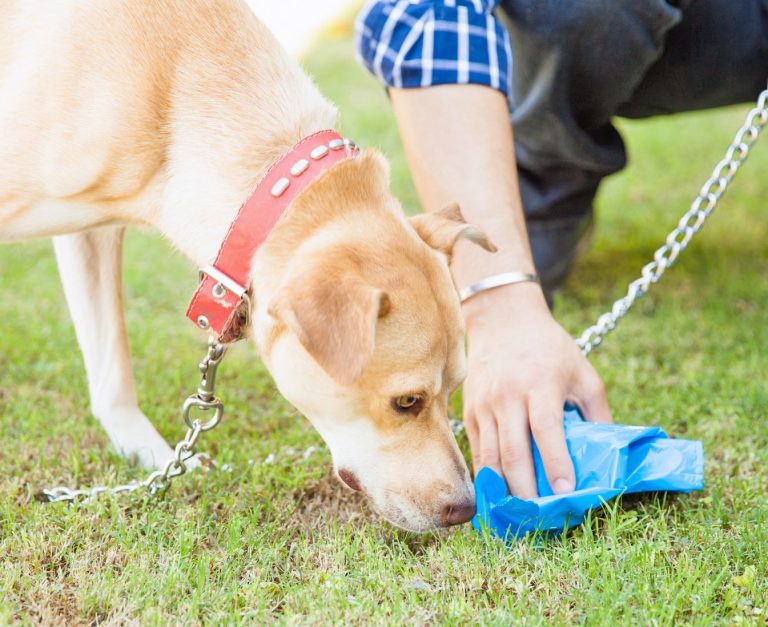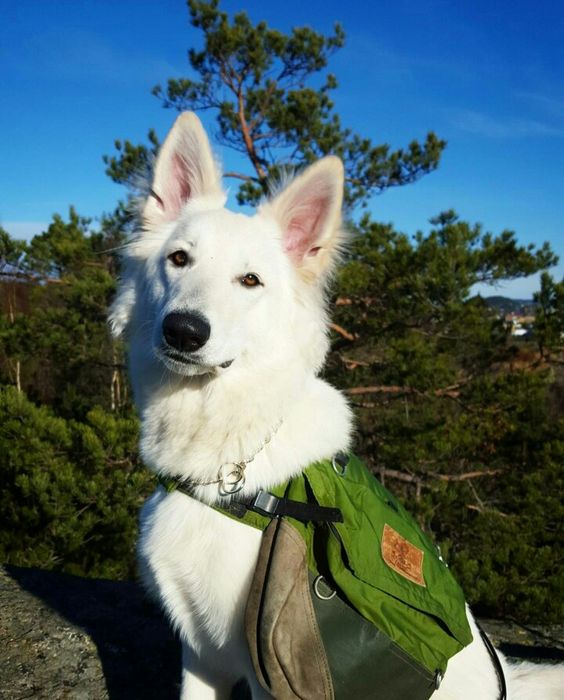7 Types of Pitbulls: A Comprehensive Guide
Dogs are not just animals but a part of our families. When you choose what dog you must introduce to your family, many factors are important. The environment the dog will experience, the temperament, and the behavior of the dog are some key elements to consider before adopting a fur baby.
Pit bulls, with different pit bull species, make great family dogs. But the stereotypes might not speak the same about pit bulldog types. While many people fear pit bulldog species, the experts suggest the opposite.
If you want to read more about pit bulldog types, this blog has covered all the aspects of pit bulls.
How are Pit Bulls Classified?
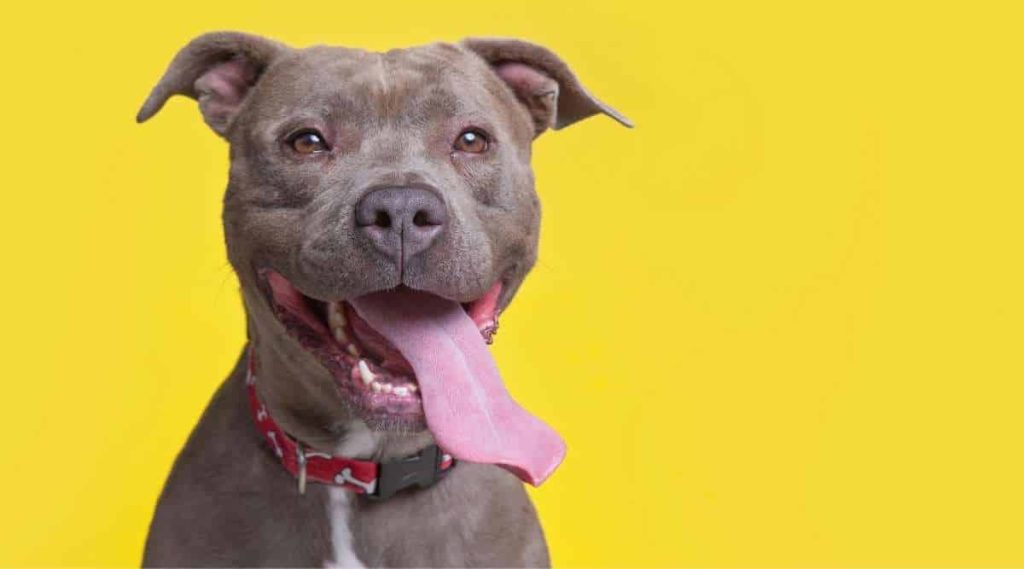
Pit bulls are dogs that are classified based on a group of characteristics. Developed from bulldogs and terriers, the classification of this breed is based on the crossing between the parent dogs. The crossbreed between the parents will dictate the physical and behavioral characteristics of an individual breed for the pit bulls.
Bull and terrier were the breeds that were mainly used for breeding pit bulls, but a different number of breeds have been classified till now.
History of Pit Bull-Type Dogs
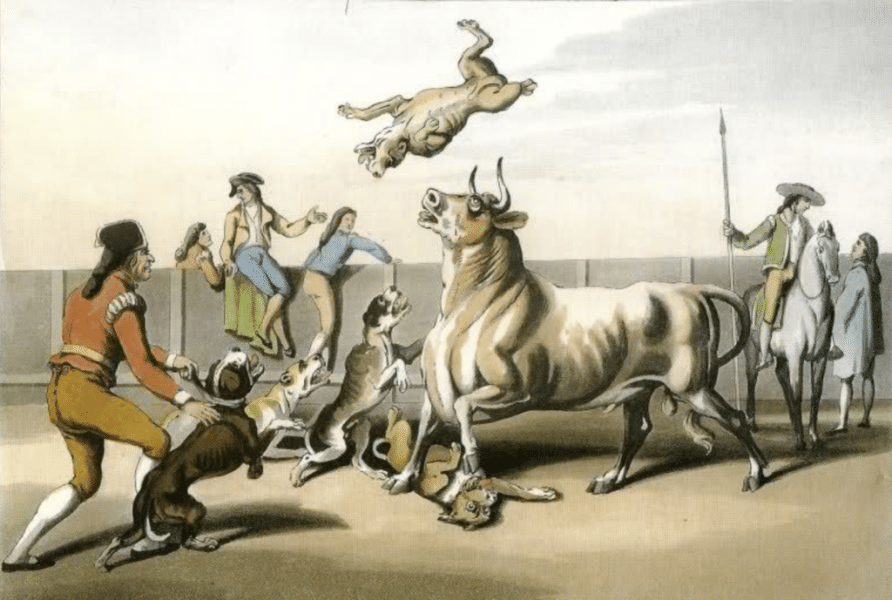
History dates back to the 1800s, and pit bulls are discussed. Old English Bulldogs were very popular in history, especially for bull baiting. The dogs were very similar to today’s American Bulldog in physical appearance. These pit bulls were used mainly for entertainment purposes that included bull baiting, ratting, etc.
The sports activities for the dogs required more agility and speed; the original pit bulls were crossed with Terriers, the first crossbreeding between the two dog types. As a result, a Bull Terrier breed of dogs was formed around 1835 with the desired characteristics of both breeds. The new hybrid dogs inherited the Bulldog’s gripping power and tenacity, whereas the agility from the Terrier. This breed of pit bull is now called the American Pit Bull Terrier.
The sports that included pit bulls became less popular because people started prioritizing animal cruelty and rights. With time, the dogs in early America became types of pit bulls that served an all-purpose role, including helping with hunts, guarding families & livestock, and herding sheep & cattle. As time progressed, the breeders in the 20th century focused more on the physical attributes of the dog, including its skull.
Now that the breed was seen more as a working-class champion, the dog became quite popular all over America. During wars (including World Wars 1 and 2), the dogs from this breed were seen as mascots and were popular during wartime.
Breed Characteristics
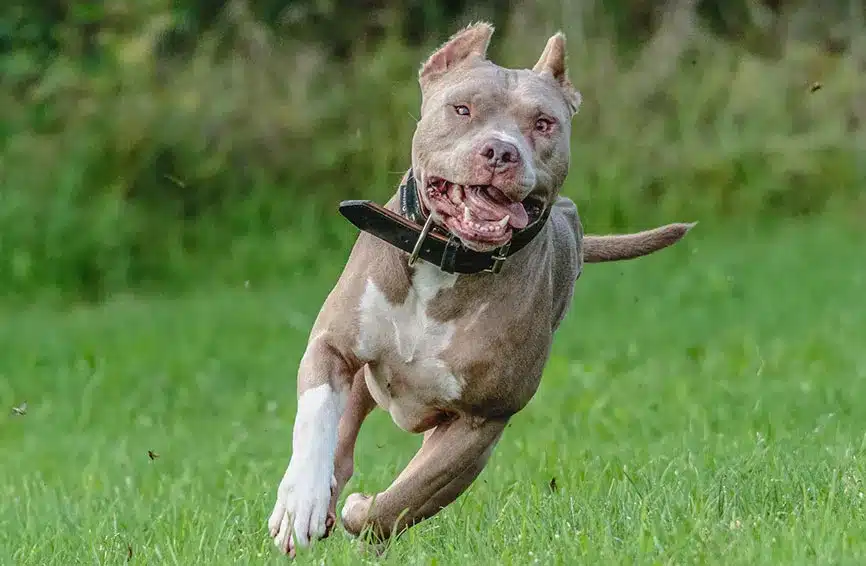
Pit bulls are known for their playful, affectionate, friendly, and people-oriented behaviors for their owners. It is very common for pit bulls to be assumed to be an aggressive breed because the dogs share a long history with sports related to fighting rings. Because of this, pit bulls are even banned in many places all over the globe.
But as a contradiction, the breed is no more aggressive than other dog breeds. The American Temperament Test Society ranks the breed as the 4th dog breed to be gentle. The Pit bulls have a lifespan of around 12-14 years and are mid-sized dogs. There will be a slight variation in different types of pit bulls. The pit bulls are moderately active, requiring approximately 30 minutes of exercise.
A Detailed Breed Overview
| Height (Male) | 16 to 22 Inches |
| Height (Female) | 14 to 20 Inches |
| Weight (Male) | 50 to 75 Pounds |
| Weight (Female) | 45 to 70 Pounds |
| Coat Type | Single Layer Coat |
| Coat Color | Blue, Brindle, White, Black, Fawn, Tan, Red, Brown, etc. |
| Shedding | Minimal Shedding |
1. Physical Characteristics
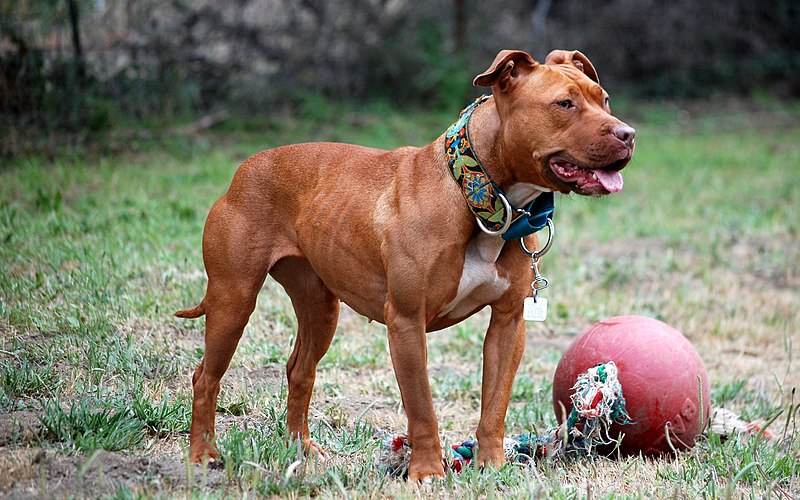
Pit bulls are known for their athletic body and defined musculature. Most of the types of pit bulls will have a medium-sized body with short hair. They are longer, and the females are relatively longer than male pit bulls. The facial features of pit bulls have been a great focus for breeders.
Pit bulls have a medium-sized head length with a flat skull. The square-shaped head is quite a prime characteristic feature of this breed. The facial features include a long muzzle and short (or medium) ears with a wide and deep muzzle.
2. Height and Weight
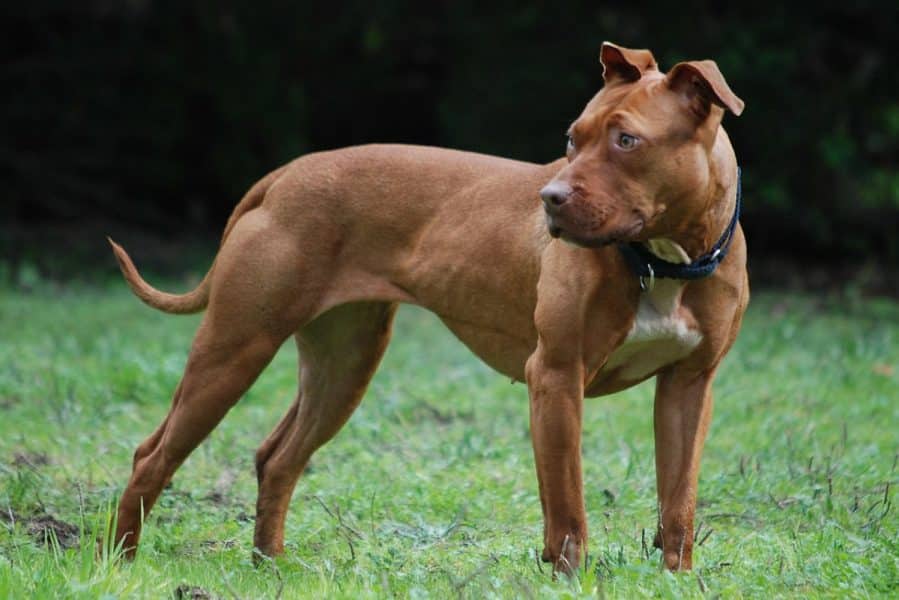
The pit bull puppies weigh around 7-10 ounces (0.6 pounds) and have a height of 8-10 inches when born. As they grow, the pit bulls will be taller and weigh much more. The breed grows mostly in 4-9 months of their lifespan. Typically, after 18 months, the dogs reach their maximum weight and height. The ideal height for a pit bull is 17-19 inches, and weight is 30-85 pounds.
Note: The height and weight of a pit bull will vary with what breed you own. Apart from this, the height and weight are unique to each dog. If you are concerned about the height and weight of your pit bull, you must consult your veterinarian about it.
3. Coat
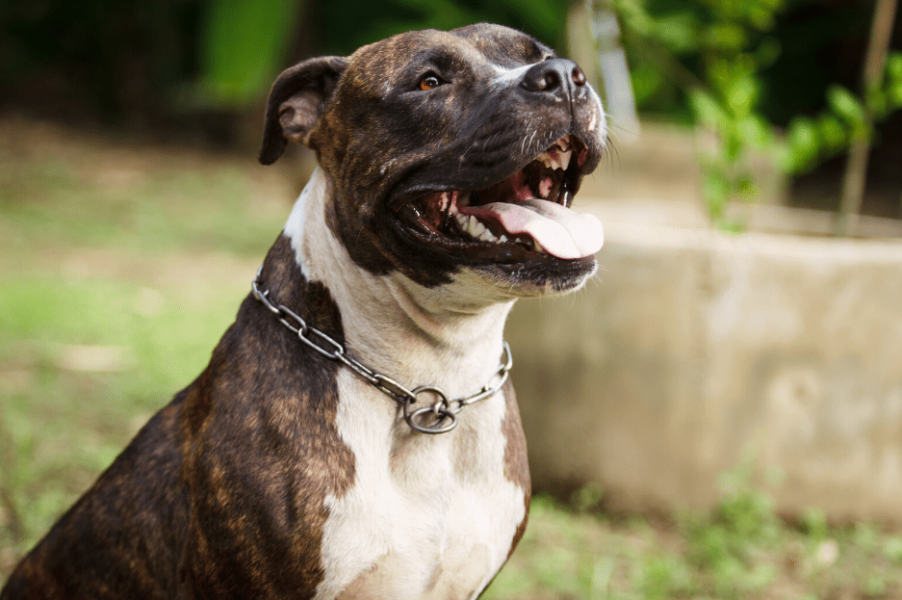
The coat of different types of pit bulls is smooth and shiny and comes in different colors. The coat of these dogs is a single-layer coat, meaning their undercoat (like other dogs, e.g. Huskies) is absent. The fur of the pit bull’s coat will have a smooth texture, and they shed relatively less than the other dog breeds.
To maintain a healthy coat for your pit bull, groom it regularly. Focus on diet plans that support the health of the dog’s coat.
4. Health Concerns
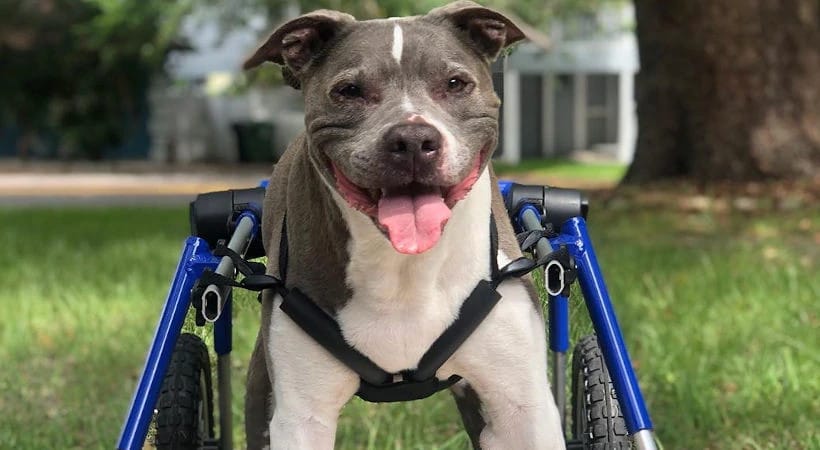
A healthy pit bull, with an ideal diet, exercise hours, and grooming, can live up to 12 to 14 years. However, they are more susceptible to many health problems requiring extra care. Skin problems, knee problems, hip dysplasia, gastric dilatation, thyroid issues, cataracts, and Ichthyosis are a few health concerns for a pit bull parent. The best way to give your furry baby a happy life is to look for early signs and provide treatment at the right time.
How to Care for Your Pit Bull
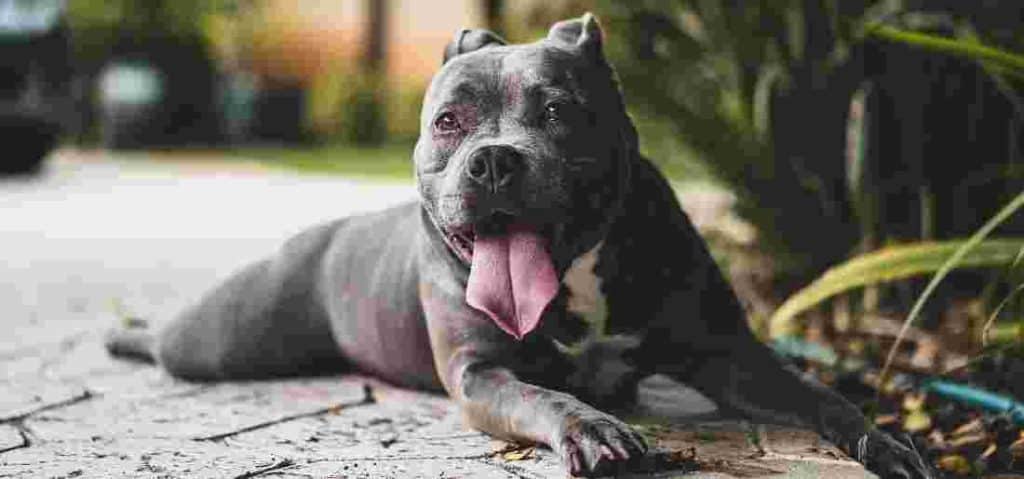
Pit bulls are a tough breed if the owners are irresponsible. Known for their aggression, it is assumed that the breed is very challenging to handle. It is an easy-going journey if you know how to take care of and understand your pit bull.
Here are some of the tips that will help you in taking care of your pit bull:
- Provide them with the needed sessions of exercises. Being a highly energetic breed, it is necessary to work off the energy levels of your dog.
- Groom regularly. This will include routine haircuts, brushing, bathing, etc. Additionally, look for the best ways to protect them against pests like ticks and fleas.
- If you don’t want to breed further your pit bull, neutering or spaying your pit bulls is very necessary. This also helps in the management of aggression of the dogs. The best time for neutering or spaying is when your dogs are 6 months old, but it is best to consult your doctor.
- While training is not necessarily taking care of your pit bull, it is considered here because it can help with training the behavior and composure of the pit bulls.
Are Pitbulls Dangerous?
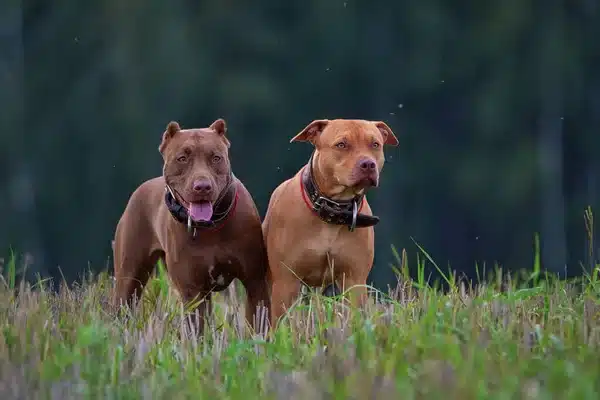
With other dog breeds like German Shepherds or Rottweilers, the pit bulls have shared the spotlight of being considered dangerous. Different types of pit bulls have been stereotyped as dangerous breeds. If we turn the pages of history, we will explore that the breed was an active part of sports activities like dogfighting. The breed was specially bred with traits that made them apt for sports activities and fights. For this reason, the breed has been associated with danger in history.
But are pit bulls dangerous? There is no doubt that pit bulls are one of the most dangerous breeds. But is this breed being dangerous the sole concern we must have? We must rather focus on whether the breed is aggressive or not. The answer is that the pit bulls are not that aggressive. Most dog experts suggest that most of the headlines made about pit bulls being a threat are a result of irresponsible dog owners.
It is right to say that the breed is relatively less tolerant than other dogs. Many people have opinionated that pit bulls, as a dog breed, are more likely to attack, making them a threat. Many countries have full or partial restrictions on owning a pit bull. Some of the countries with restrictions are Brazil, Canada, Germany, and China. In contrast to the rumors about the breed, pit bulls are very affectionate, protective, and lovable dogs. Most of a pitbull’s temperament will depend on the environment the dog is exposed to at a young age.
Pit Bull As a Family Dog
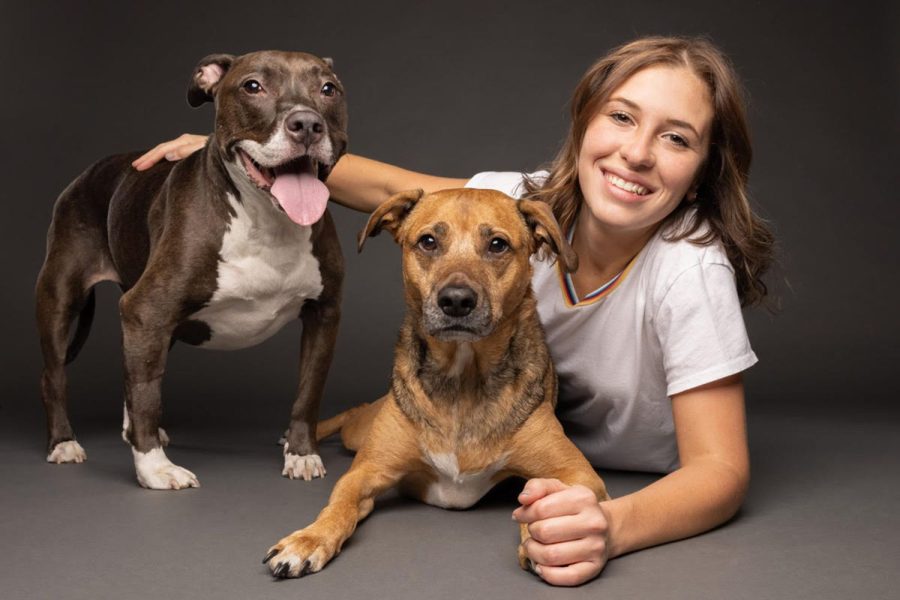
If your pit bull is trained well, he is not a threat to your kids, contrary to the stereotypes of this dog breed. The pit bulls are very active and energetic, so they must get the required exercise time. If you want to make a pit bull baby a part of your family, you should be able to put in patience, effort, time, and love. The pit bulls are loving, protective, and loyal, making them a perfect family dog.
As we just mentioned, introducing a pit bull in your family will require time and patience; without the right training, it can be tough to manage a pit bull in a home. This breed is just like the other breeds when it comes to housebreaking.
Ensure you have chew toys for your pit bull if you don’t want to see your shoes or furniture all gnawed up. As a puppy, be very cautious of what habits your pit bull is picking. The puppies tend to pick up habits that can be problematic as they grow up.
Pit Bull with Kids
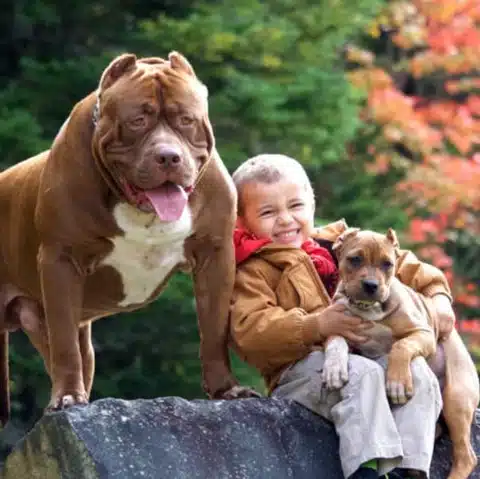
Pit bulls, an excellent family dog, make an excellent companion for your kids when trained the right way. Because dogs have low tolerance, kids must be taught to be with pit bulls. How kids interact with pit bulls will also dictate the response of pit bulls. Teach the kids to avoid behavior that might make the dog aggressive.
Children should be told not to pull the dog’s ear or tail and approach them while they eat or sleep. Each pit bulldog will be different; some can be way calmer, and some pit bulls can be a bit more aggressive. Before you adopt a pit bull, interact with the dog to ensure it adapts to your lifestyle and family.
Ensuring Safety with Pit Bulls
Everyone’s experience with a pit bull will differ depending on the individual dog, the environment, and how owners interact with the dog. Here are some ways to ensure safety if you already have a pit bull or plan to adopt one.
- Learn to read the signs of aggression of your pit bull. The general signs of aggression in a dog include baring teeth, growling, and a stiff body. If your dog shows signs of aggression, quickly escape that situation.
- It is not always aggression that provokes a pit bull to attack. A scared pit bull can attack as well. To ensure the pit bull doesn’t attack as a response to fear, look out for signs of fear and anxiety in your dog.
- The pit bulls have great strength, so it can be a trouble as well if they get over-excited, especially for kids. An excited pit bull can jump on the kids. In such a case, opt for redirecting the dog’s behavior.
- To navigate and match the energy of the pit bulls, provide them with exercise sessions that help the dogs get their daily dose of physical activity. Once the pit bull energy is tackled, the threat of pit bulls is greatly reduced.
Types of Pit Bulls
| Breed | Height | Weight | Lifespan |
Origin |
| American Pitbull Terrier | 17–21 inches | 30 to 65 pounds | 12–14 years | 1800s, USA |
| American Staffordshire Terrier | 17 to 19 Inches | 40 to 70 Pounds | 12–16 years | 1800s, USA |
| American Bullys | 13 to 21 Inches | 70 to 120 Pounds | 8–12 years | 1980s, USA |
| Staffordshire Bull Terriers | 14–16 inches | 24 to 38 pounds | 12–14 years | 1800s, England |
| Bull Terriers | 21–22 inches | 50 to 60 pounds | 12–13 years | 1800s, England |
| Colby | 12 to 16 inches | 32 to 62 pounds | 8–12 years | 1896, US |
| Bluenose Pitbull | 18 to 21 inches | 30 to 60 pounds |
12–14 years | 1800s, England |
1. American Pitbull Terrier
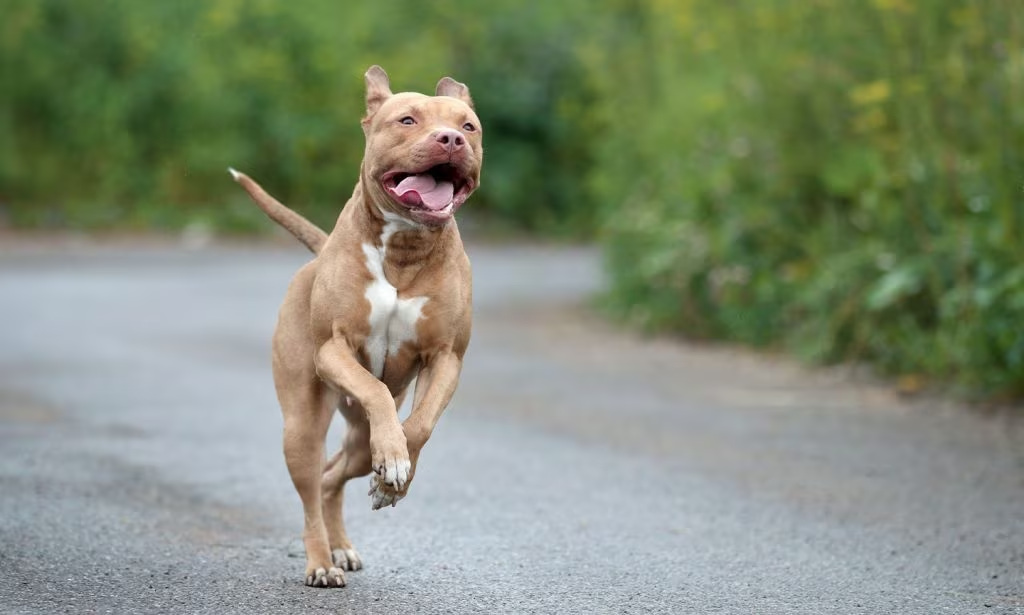
The American Pitbull Terrier is a great family dog. The origin of this breed was to bait bulls, dogfighting, and other sports activities. Among different types of pit bulls, this breed results from breeding between English Terriers and English Bulldogs. The males of this breed can be 18–21 inches in height and weigh around 35–60 pounds. For females, the height can go up to 17–20 inches, and weight falls under the range of 30–50 pounds.
2. American Staffordshire Terrier
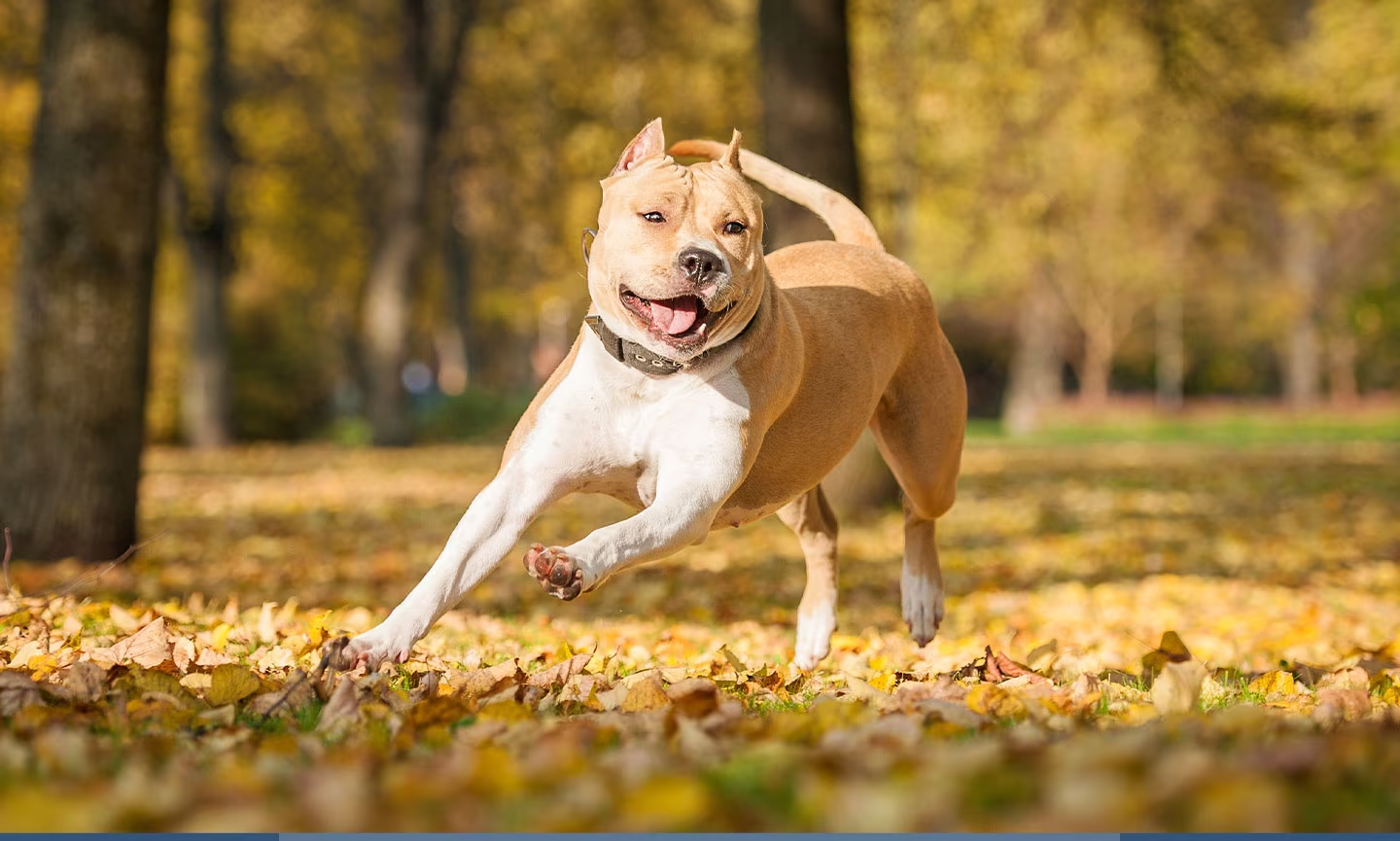
The distinctive characteristics of this breed include a broad head, pronounced cheekbones, and a well-defined jaw. This strong and muscular dog can weigh up to 40 to 70 pounds and height 17 to 19 inches. The American Staffordshire Terrier is a result of breeding between the Old English Bulldog and the English terrier breeds.
3. American Bullys
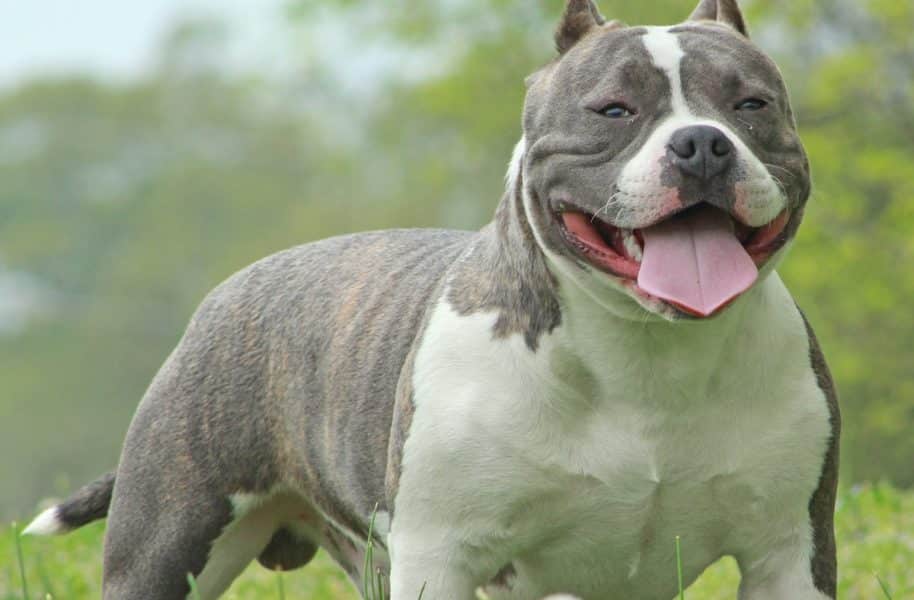
The parents for this pitbull breed are an American Pit Bull Terrier and an American Staffordshire Terrier. Among different types of pit bulls, this breed is one of the largest pit bulls. Their height can vary between 13 to 21 inches, whereas the weight for this breed usually falls under the range of 70 to 120 pounds.
4. Staffordshire Bull Terriers
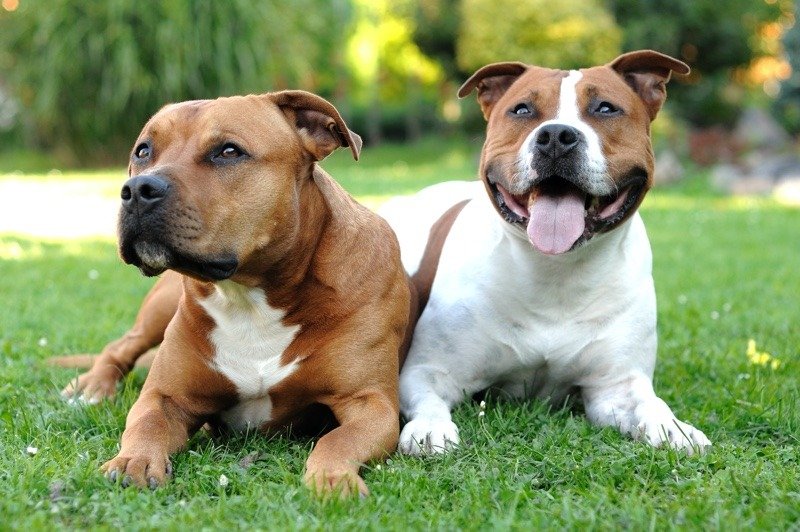
Staffordshire Bull Terriers breed of pit bulls share the same ancestry as bull terriers. Commonly called Stafford or Staffy, this breed was named for the place it originated in (i.e., Black Country of Staffordshire). The height for this pit bull breed ranges from 14 to 16 inches, with a total weight of 28-38 lbs (males) and 24 1⁄4-34 lbs (females).
5. Bull Terriers
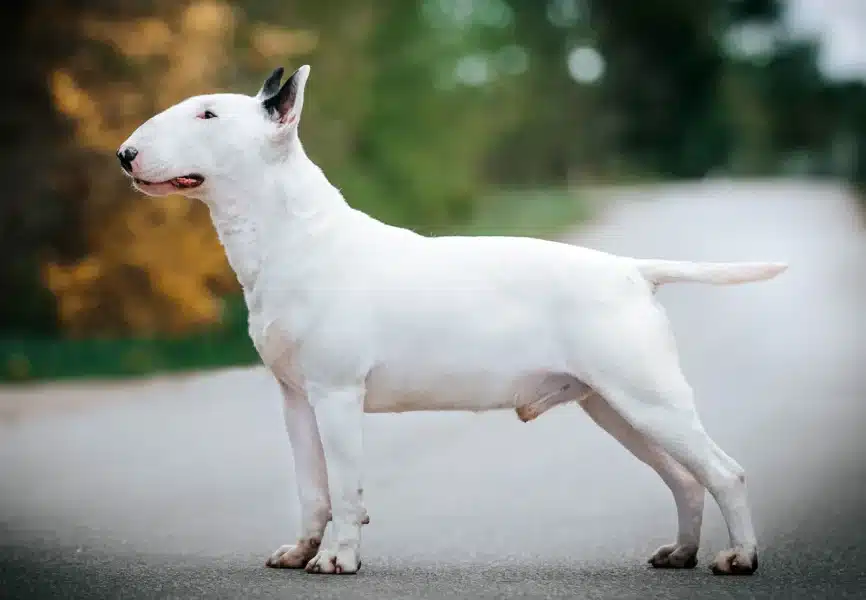
Bull terriers are a result of breeding between bulldogs and white English terriers. One of its parents, the white English Terrier, is now an extinct breed. This dog is very cheerful and playful. It has two variations, the miniature and the standard one. The ideal height and weight for a standard bull terrier is 22 inches and 60 pounds, respectively. The ideal height and weight of the miniature variety is 14 inches and 33 pounds.
6. Colby
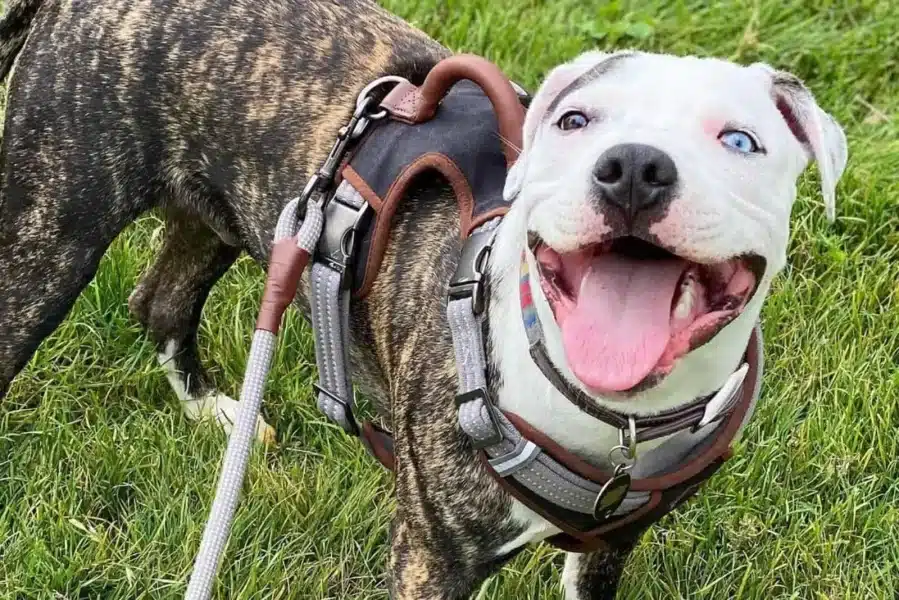
Originating about 100 years ago, this pit bull breed resulted from breeding between two dogs, a bull and a terrier. The name of this breed is supposed to be based on the breeder who produced this bloodline, John P. Colby. It is a strong and dignified breed among the different types of pit bulls. The weight for this breed can range between 30 and 50 pounds (females) and 35 and 60 pounds (males).
7. Bluenose Pitbull
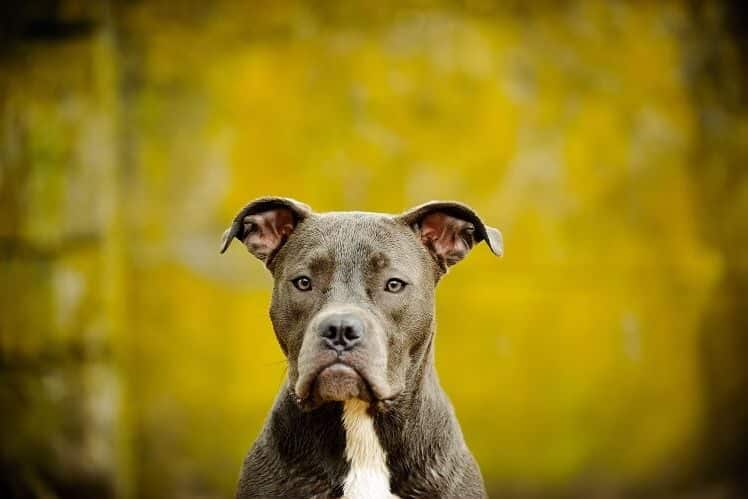
Bluenose pit bulls are one of the rarest types of pit bulls. The breed is popular for one of its recessive genes (which requires the presence of recessive genes in both the parents to be transferred to the offspring), i.e., their blue nose.
The parents for this pit bull breed are an American Pitbull Terrier and an American Staffordshire Terrier (it can either be a pure breed of either of these two parents or a mix). The weight and height for this breed is an average of 30 to 60 lbs and 18 to 21 inches, respectively.
Summing It Up
Pit bulls are nothing that people assume them to be. Indeed, all types of pit bulls are not that tolerant, but with the right environment, training programs, and responsible owners, they make a great dog to welcome to your house.
There are different pit bull dog types like American Pit bull terriers, Staffordshire Bull Terriers, American Bullys, American Staffordshire Terrier, and Colby. Different types of pit bulls will vary a bit regarding behavior and temperament, but if you are a responsible owner, owning a pit bull is never a challenge.
Share a memory with your pit bull by commenting in the box below!

